|
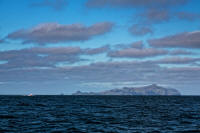
1. Approaching the main island of Hirta.
|
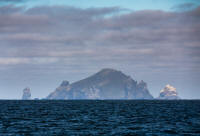
2. The smaller island of
Boreray, flanked by the sea stacks of Stac an Armin on the left
and Stac Lee on the right. |
The islands had been
inhabited for centuries or even millennia, but during the 19th
century tourists began to visit Hirta and the islanders’
isolation was no longer something that could be considered
inevitable. Their way of life was also becoming increasingly
hard to sustain and in 1930 the remaining population made the
decision to leave the islands.
Today the principal
residents are seabirds, with human presence limited to the main
island of Hirta where National Trust volunteers work in summer
and there is a small military base. In the late spring and
summer months day trips are available for visitors. |
|
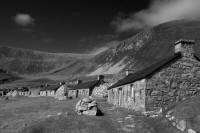
3. The village street with
refurbished cottages in the foreground and ruins of others in
the distance. |
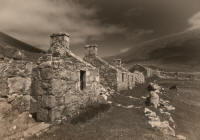
4. A ‘vintage’ black &
white treatment of village ruins. |
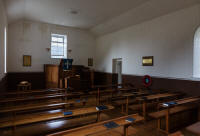
5. Interior of the church
on Hirta. |
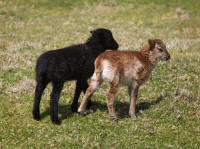
6. Two Soay lambs. The
Soay sheep on Hirta are a hardy breed descended from a feral
population originally kept on the island of Soay. (Note: the
animals have ear tags but I have amended the image for aesthetic
reasons).
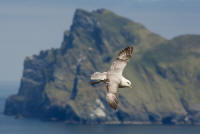
9. Fulmars nested on the
cliffs; one flies past Boreray. |
|
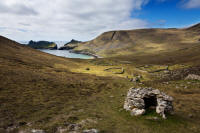
7. Looking back to Village
Bay on Hirta. In the foreground is a cleit, originally used to
store a variety of produce. |
 |
8. A
view from a cliff edge at a point known as ‘The Gap’,
535 ft above the sea. The island is Boreray, with Stac
Lee visible and Stac an Armin partly hidden (see also
Images 12 & 13). |
|
|

10. A fulmar flies between
the stacks and Boreray. |
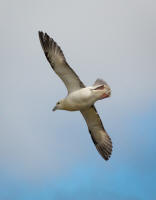
11. A fulmar seems to be
about to land. |
|
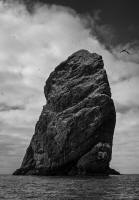
12.
Stac an Armin |
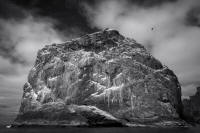
13. Stac Lee |
|
12. &
13. Boreray
and the stacks are home to large gannet colonies. The
images show the stacks with numerous gannets in the sky
above; many are small dots but can be picked out when
clicking on the larger image.
When St. Kilda was inhabited both
stacks were regularly climbed to harvest gannets and
fulmars and their eggs. Remarkably a bothy was
constructed on the stacks so that the islanders could
remain on a stack if needed or conditions prevented
leaving.
Today hunting the birds is prohibited
and climbing the stacks not permitted unless special
permission is granted. |
|
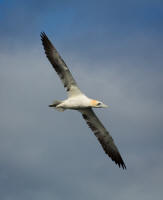
14. A gannet in flight. |
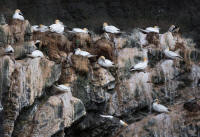
15. Coming close to the cliffs and gannets and their nests can
be seen. |